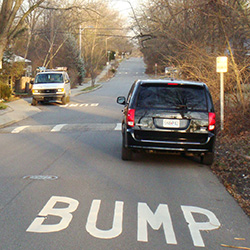Welcome to the world of speed bumps – those familiar road obstacles that make drivers slow down and ensure safety on the streets. Speed bumps are a common sight on both roads and parking lots, strategically placed to regulate vehicle speed and enhance pedestrian safety. In this article, we will delve into the purpose of speed bumps, exploring their design, impact, benefits, and considerations for installation.
What are speed bumps?
Speed bumps are traffic calming devices designed to reduce vehicle speeds in specific areas for safety reasons. They are typically raised sections of pavement placed across the road, forcing drivers to slow down to navigate over them. Speed bumps come in various forms, each serving a unique purpose:- Humps: Rounded raised sections that span the width of the road
- Cushion: Wide, flat-topped bumps often painted in bright colors for visibility
- Sinusoidal: Series of rounded bumps in a wave-like pattern
Safety Benefits of Speed Bumps
Speed bumps play a crucial role in enhancing safety on roads and in parking lots by:- Controlling Traffic Speed: Speed bumps effectively slow down vehicles, reducing the chances of accidents caused by speeding.
- Reducing Accidents and Injuries: By forcing drivers to drive at lower speeds, speed bumps contribute to a decrease in accidents and injuries, especially in areas with high pedestrian traffic.
- Improving Pedestrian Safety: Speed bumps create safer environments for pedestrians by lowering vehicle speeds near sidewalks, crosswalks, and other pedestrian areas.
Impact on Vehicle Wear and Tear
Speed bumps can have an impact on vehicle wear and tear, including:- Potential Damage to Vehicles: Speed bumps can cause damage to vehicles if not approached at the correct speed or angle.
- Effects on Suspension, Tires, and Alignment: Constant exposure to speed bumps can lead to wear on the suspension system, tires, and alignment of vehicles.
- Minimizing Impact on Vehicles: Proper design and installation of speed bumps, including appropriate height and spacing, can help reduce the negative effects on vehicles.
Considerations for Installing Speed Bumps
When installing speed bumps, several important considerations should be taken into account:- Factors to Consider: Before installing speed bumps, factors such as traffic volume, speed limit, and road conditions need to be evaluated to determine the most appropriate locations.
- Impact on Emergency Vehicles and Public Transportation: Speed bumps may have a negative impact on the response time of emergency vehicles and the smooth operation of public transportation, so careful planning is essential.
- Proper Placement and Spacing: The proper placement and spacing of speed bumps are crucial to ensure their effectiveness without causing unnecessary disruptions to traffic flow.
Criticisms of Speed Bumps
While speed bumps are effective in controlling traffic speed and enhancing safety, they are not without criticism:- Noise and Discomfort: One common criticism of speed bumps is the noise generated when vehicles pass over them, as well as the discomfort experienced by passengers.
- Delays: Speed bumps can lead to delays, especially in areas with frequent stops, which may be perceived as an inconvenience by drivers.
- Speed Cameras: Implementing speed cameras is a technology-driven approach to enforcing speed limits without the physical barriers of speed bumps.
- Traffic Calming Measures: Various traffic calming measures, such as road narrowing and chicanes, can be used to slow down vehicles and improve safety without the use of speed bumps.
- Ensuring that speed bumps are properly designed and installed can help minimize noise and discomfort while still achieving the desired traffic calming effects.
- Strategically placing speed bumps in locations where delays are minimized can help balance the need for safety with the convenience of drivers.

